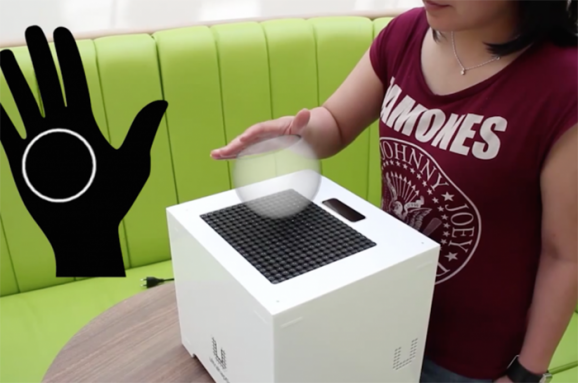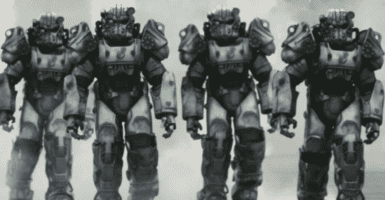Virtual Shapes Can Now Be Felt, Not Just Seen
This article is more than 2 years old
 Most people are familiar with haptic technology, even if they aren’t familiar with the term. The field of haptics involves the science of touch, which means that any technology that stimulates one’s sense of touch is considered haptic — your vibrating phone (or tattoo, if you’re a high-tech Nokia customer), your Wii remote that shakes and rumbles when you crash your Mario Kart, or the scientifically fabricated work of science fiction that allows you to feel what you read. This is the stuff Aldous Huxley wrote about when he described the “feelies,” futuristic movie theaters that provide patrons a full sensory experience to complement the on-screen story. Haptic technology has been developing like mad recently, and not just for entertainment purposes. It’s being used to help train surgeons and rehabilitate patients recovering from strokes. And now, scientists have integrated ultrasound into haptics, converting digital images into physical ones with which people can actually interact. Yep, I’m talking about virtual images that can be touched and felt.
Most people are familiar with haptic technology, even if they aren’t familiar with the term. The field of haptics involves the science of touch, which means that any technology that stimulates one’s sense of touch is considered haptic — your vibrating phone (or tattoo, if you’re a high-tech Nokia customer), your Wii remote that shakes and rumbles when you crash your Mario Kart, or the scientifically fabricated work of science fiction that allows you to feel what you read. This is the stuff Aldous Huxley wrote about when he described the “feelies,” futuristic movie theaters that provide patrons a full sensory experience to complement the on-screen story. Haptic technology has been developing like mad recently, and not just for entertainment purposes. It’s being used to help train surgeons and rehabilitate patients recovering from strokes. And now, scientists have integrated ultrasound into haptics, converting digital images into physical ones with which people can actually interact. Yep, I’m talking about virtual images that can be touched and felt.
Researchers at the University of Bristol recently published a paper in ACM Transactions on Graphics detailing their method for generating touchable, 3D virtual shapes using ultrasound. The ultrasound is directed down toward the user’s hands from above. When those ultrasounds form complex patterns — such as a shape or multiple shapes, the air they push around can be perceived visually as a floating shape. In the demo below, scientists directed the ultrasound at a layer of oil, which then reflects certain shapes in its movement and depressions. Altogether, the system creates a 3D shape that, when integrated into a 3D display, generates something the user can both see and feel.
One of the co-authors of the paper, Dr. Ben Long, says:
Touchable holograms, immersive virtual reality that you can feel and complex touchable controls in free space, are all possible ways of using this system. In the future, people could feel holograms of objects that would not otherwise be touchable, such as feeling the differences between materials in a CT scan or understanding the shapes of artefacts in a museum.
Sounds pretty awesome, doesn’t it? Imagine a time when, instead of exploratory surgery, a surgeon can use a haptic technique to feel a CT scan, thus being able to identify a tumor or growth without having to actually go into the body? Another possibility down the road is that such a system could allow research teams from across the globe to collaborate on the same project, as distance would no longer be an obstacle to perceiving and feeling shapes and objects, and the necessity for 3D printing such models would be reduced.
In other words, virtual reality, with the help of haptics, is poised to take on yet another meaning and set of possibilities, and will continue to enhance and change reality as we know it.












